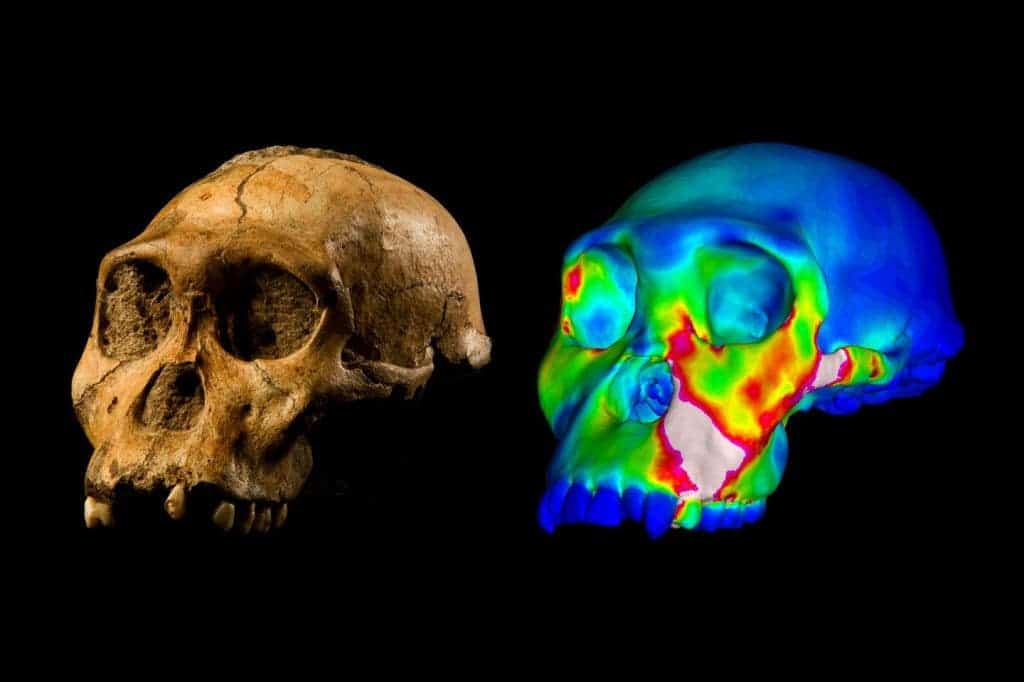New models show that 2 million years ago, early humans couldn’t have survived on a diet based on nuts and other hard foods.

This is the fossilized skull of Australopithecus sediba specimen MH1 and a finite element model of its cranium depicting strains experienced during a simulated bite on its premolars. “Warm” colors indicate regions of high strain, while “cool” colors indicate regions of low strain. Credit: Image of MH1 by Brett Eloff provided courtesy of Lee Berger and the University of the Witwatersrand.
In 2012, a study garnered international attention when it claimed that early human ancestors survived on a diet of hard foods mixed in with tree bark, fruit, leaves and other plant products. But now, a new study found that early humans, Australopithecus sediba simply didn’t have the jaws for this kind of diet.
“Most australopiths had amazing adaptations in their jaws, teeth and faces that allowed them to process foods that were difficult to chew or crack open. Among other things, they were able to efficiently bite down on foods with very high forces,” says Professor David Strait, team leader and anthropologist from Washington University in St. Louis, US.
Australopithecus sediba had a relatively short reign, from 1.98–1.97 million years ago, but it is thought that it is either a direct ancestor of the Homo, or lies very close to this heritage. Co-author Dr Justin Ledogar, researcher at the University of New England in Australia added:
“Australopithecus sediba is thought by some researchers to lie near the ancestry of Homo, the group to which our species belongs yet we find that A. sediba had an important limitation on its ability to bite powerfully; if it had bitten as hard as possible on its molar teeth using the full force of its chewing muscles, it would have dislocated its jaw.” It simply didn’t have the bite power.
Their conclusion relies on a biomechanical model conducted on an A. sediba skull; the skull was retrieved by Berger’s team in 2008 from Malapa, a cave some 40kms west from Johannesburg, South Africa. The model itself is not a novel concept – it’s the same approach used by engineers to see if planes or structures will break during mechanical pressure.
This study doesn’t discuss whether A. sediba is indeed an ancestor of humans, but it does indicate that dietary pressures played a key role in the evolutionary path of early humans.
“Humans also have this limitation on biting forcefully and we suspect that early Homo had it as well, yet the other australopiths that we have examined are not nearly as limited in this regard,” says Ledogar. “This means that whereas some australopith populations were evolving adaptations to maximize their ability to bite powerfully, others (including A. sediba) were evolving in the opposite direction.”
“Some of these ultimately gave rise to Homo,” adds Strait. “Thus, a key to understanding the origin of our genus is to realize that ecological factors must have disrupted the feeding behaviors and diets of australopiths. Diet is likely to have played a key role in the origin ofHomo.”









